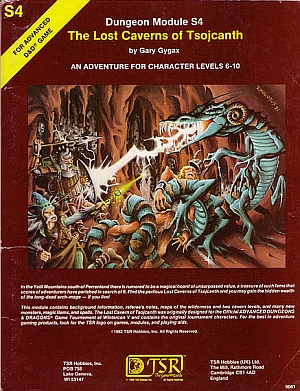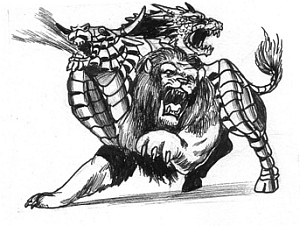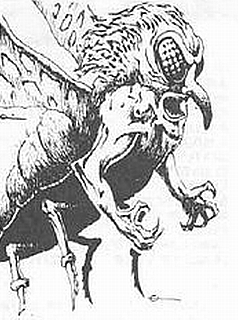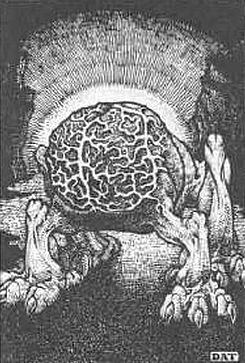Gearing Up for Fate?
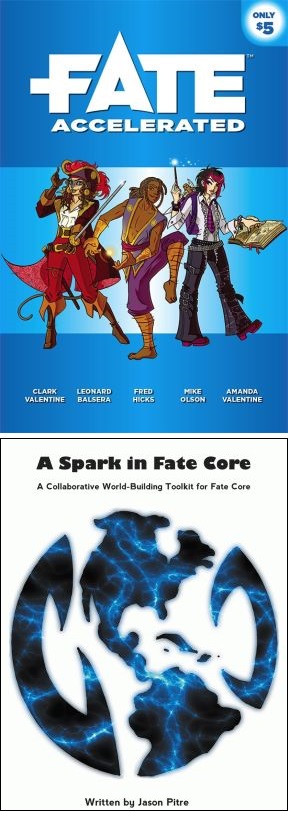
The twice-monthly (or thereabouts) sessions of Man Day Adventures have been through a few game systems over the years: AD&D (2nd edition), the d20 System (3.0, 3.5, and Pathfinder), Sine Nomine’s excellent Stars Without Number, brief excursions into d20 Modern, Swords & Wizardry, and Mutants & Masterminds, and, most recently, the fabulous Dungeon World for a rollicking campaign under the auspices of three GMs.
As July 2015 bears down on us, we prepare to bid a sad adieu to one of Man Day’s adventurers, who is leaving the U.S. for a new life in a foreign land. The consensus is that his final Man Day will be the final act of our Dungeon World campaign. Further, it seems most likely that our next game with be Fate Accelerated (or FAE), published under both the Open Gaming License and Creative Commons Attribution license by Evil Hat Productions.
To prepare for the upcoming new campaign, I trundled my virtual self to DriveThruRPG and purchased FAE. While I was there, I also picked up A Spark in Fate Core, published by Genesis of Legend Publishing. This latter product bills itself as a “Fate World Building Toolkit” and, since one Man Day adventurer had talked several times about using FAE to create a collaborative campaign world, it seemed like a well duh acquisition.
FAE claims that it can be used to play (just about?) any genre. The players get together, decide on a genre, and then make characters that fit that genre. I’ve run across this claim before (GURPS, for example), and I’ve almost always been at least somewhat underwhelmed. Often, it seems based on my experience, the system claims to work for (just about?) any genre, but then the system ends up working against that claim because the system itself is too rigidly defined.
Keeping in mind I’ve not played FAE yet, it does seem as if FAE avoid at least this pitfall. Characters are defined more by narrative hooks than by ability scores. These hooks come in three flavors: a high concept, which “is a single phrase or sentence that neatly sums up your character”; a trouble, which is that “one thing that always get you into trouble”; and at least one other aspect, which is something “really important or interesting about your character.” Characters also have approaches, which describe how characters accomplish tasks. Each of the six approaches are rated as a bonus ranging from +0 to +3. One character might be Flashy +3, whereas another character might be Careful +3. Lastly, FAE recommends each character start with one stunt, which “is a special trait that changes the way an approach works for your character.” Stunts either grant a bonus (usually +2) or else let the character ignore certain rules in a predefined circumstance.
Since the action resolution system starts and ends with narration built around some combination of high concepts, troubles, aspects, approaches, and stunts, a huge range of activities can be accounted for without dozens of pages of rules. For example, one of the sample characters, Reth of the Andrali Resistance, has “Suncaller of the Andral Desert” as a high concept. This lets him “magically call forth the power of fire.” FAE doesn’t include pages of fire spells or powers. Instead, Reth’s player would narrate Reth’s desired course of action, such as:
“I lunge at the robot, sheathing my body with flame, as I attempt to slam my foe.”
The player would then roll four Fate Dice, apply Reth’s Good (+3) Forceful modifier, and then compare the result to the robot’s defense total. The degree of success determines the results, ranging from failure to short-term benefit to damage to more damage plus a possible short-term benefit. Pretty much everything works more or less like this (narrate, roll, determine results). The use of Fate Points can further amplify results or even establish facts about a current scene.
In short, I kind of psyched to give FAE a test drive. There are oodles of reviews for the system out there, many of which do a better job explaining things than I do. Check them out.
So, what about A Spark in Fate Core? In short, it’s almost exactly what I hoped for. ASiFC offers a step-by-step method to collaborative world building that helps ensure all players at the table have a pretty much equal say.
This process starts by listing favorite media, such as a particular television show or comic book. Each player then explains the inspiration for his choice. For example, if I choose Pee-Wee’s Playhouse as my favorite, I would then expand on this choice by noting how much I like the all of the goofy supporting characters such as Cowboy Curtis and Billy Baloney. After all players have shared their favorite media and related inspiration, the group then decides on a genre that incorporates those media and inspirations. The genre should have a descriptor that shows how the group’s take on the genre stands apart from the genre’s most common examples.
This process of players taking turn sharing, arriving at group decisions, asking and answering questions, et cetera, continues until the world has a scale (small or large), a list of facts, a title, several Sparks (the system’s name for potential problems or sources of conflict), a group of Faces (important NPCs), and noteworthy places. The GM uses the Sparks to set up issues that impact the shared story. One Spark is a Legacy Issue; it used to be a problem, but now serves as history and culture. Another Spark is the Current Issue. This is the main focus of the campaign to start with. A third Spark is an Impending Issue. It’s not a problem yet, but it will be eventually.
The process described in ASiFC is simple enough, flexible, and truly collaborative. The downloadable PDF is free. If there had been a pay what you want option, I’d have paid for it. It’s worth at least a couple of bucks, and ASiFC‘s process is generic enough that it would work well with just about any game system.

